
Digital Learning Journey: I am packing my suitcase. What I take along...
The key items one should never forget on a digital learning journey
Dear E-Learning Punk friends, one year of corona, one year without a holiday. Do you remember back when it was possible to travel the world with ease?
Cocktail in one hand, a good book in the other. Feet in the sand, sun on your face, looking at the roaring sea. That’s how many of us remember the perfect holiday. But there are many other ways to travel: From city breaks through backpacking tours to cruises, there’s something for everyone. The same applies to a learning journey.
What exactly do you need to pay attention to when planning, preparing and going on this journey? Over a nice cocktail, we asked travel guide and expert Eva Lettenbauer to offer some tips and hand you a checklist.

Planning a learning journey – What’s the destination?
Am I going on to explore far-flung places, or do I return to the little finca at the edge of the fishing village in Mallorca? We often go into holiday mode as soon as we start planning our trip. But we do have to decide on the destination.
Similarly, we need to figure out what digital training is meant to achieve for the company. What corporate goals is the training geared towards? What performance goals are being pursued? What exactly do we want to bring across? Should the training focus on background knowledge? Practical application? Sharing experiences? The more clearly you can define where you want to go with this journey, the more effectively you can leverage the different learning formats.

Everyone goes at their own pace on holiday. One person might want to see all of Paris in a day, while the next person would rather watch the hustle and bustle while sitting in a street café in Montmartre. But in the end, both want to take a picture in front of the Eiffel tower.
Defining the goals – the destination – and the contents of a training course is crucial for the success of a learning journey, but so is taking account of the actual learners. They are the target group the learning offers need to be tailored to. If employee requirements are met, they learn more efficiently and learning success is achieved more effectively. Learners should be enabled to close their knowledge gaps to the best of their abilities and learn at their own pace.
Packing the suitcase – What are the essentials?
Finally, the time has come! A quick check to see if last year’s bikini still fits and the sunscreen hasn’t hardened up. Now to the evening outfits – What can I wear when it gets cooler at night? Hang on. Does it even cool down in Bali?
Packing the right stuff for my destination is important. The same applies to training objectives: Each format is suitable for a range of contents and has its own advantages. Virtual classrooms are great for exchanging ideas, while web-based training helps participants to learn theoretical content at their own pace. By packing the right formats, you create a learning journey. This also opens up the opportunity to create small, digestible learning nuggets that are easy to integrate into day-to-day work.

Shoes, clothes, cosmetics, books and, of course, my sunglasses land in my suitcase.
For a learning journey that means the individual modules are defined. You might pack a virtual classroom, game-based learning, on-the-job challenges, social learning, quizzes and fill each with suitable content.
For imc customers, Eva Lettenbauer handles that part. She is a specialist for learning experience design at imc and turns contents into learning content. Above all, the learning journeys she thus creates motivate and aim to activate the learners.
“You want to capitalise on the strengths of each format and cater to different requirements and levels,” says Eva. “Depending on the level, advanced employees might even skip simpler topics. The better the modular system, the more flexible it is, allowing you to tailor it to the specific demands of each learner.”

Let the journey begin
Finally arrived and checked in. A quick look around the hotel, then I’ll see what I can reach on foot. Each journey has different stages. I need to get my bearings before I party in the best club in town with the locals without sticking out as a tourist. ¿Quién sabe? Maybe I even speak a few words of Spanish by the end of my trip?
The learning journey also goes through different stages. First, the learner needs to find their way around. A brief introduction helps to set the tone for the topic and motivate the learner. Then, the theoretical foundation is created as the necessary knowledge is gained. In the next step, the learned material is applied – on-the-job challenges, job aids, tests in quiz format and, of course, social learning can be leveraged to achieve this stage goal. Finally, it all has to be internalised to reach the end of the journey. From this point onwards, the learner can also act as a mentor and support others in their development.

Checklist
The best thing about the travel guide I used for my last holiday was the checklist for must-do sights and experiences in the city. To equally help your digital learning journey become a resounding success, we offer this checklist:
- Define objectives and content
- Distribute content across suitable formats
- Introduce the learner to the training and motivate them
- Create a theoretical foundation
- Apply the knowledge on the job
- Establish an active, self-directed learning culture
Now, we are just as excited about learning journeys as we are about travelling.
Of course, you won’t have to wait long for the next edition of E-Learning Punk, either. We will be all be about the intriguing topic of gamification.
... and if you’re still looking for the right holiday read: We’ve got that covered as well.
![[E-Learning Punk] Exploratory 3D Learning](https://images.im-c.com/wp-content/uploads/2021/02/imc_image_elearningpunk_3Dlearning_hero.jpg)
Exploratory 3D Learning
Not only movies like “Avatar”, but also learning content can benefit from spatially compelling images. We explain the advantages of this professional development trend and present you application scenarios for 3D learning.

Immersive Learning during the Crisis
Immersion is one of the most successful learning methods. Jennifer Fritz, VR expert, points out the potential benefits of using Virtual Reality especially during this unprecedented times.
Contact person
I joined the imc newsroom team in 2021. As a journalist my heart beats for content and storytelling.
I’m excited to figure out how e-learing and digitization affect the future of work. My task is to create content to talk about and I’m always looking for trends.
Privately I love to travel and eat Tapas.
Topics: E-Learning Trends, Corporate Social Responsibility, Press and Influencer Relations
![[E-Learning Punk] Exploratory 3D Learning](https://images.im-c.com/wp-content/uploads/2021/02/imc_image_elearningpunk_3Dlearning_hero.jpg)
Exploratory 3D Learning
Spatial depth brings profound changes to the world of professional development

Digital 3D professional development
Maximum educational value x3
- Interactive and exploratory learning in virtual space
- Independent exploration of a visually appealing world
- Experiencing the immediate consequences of actions
Application scenarios for 3D Learning x3
Onboarding
In large corporations, a 3D map can provide initial orientation to the various corporate divisions which are displayed on a kind of city map, for example.
Product training
A 3D map makes it possible to vividly present products and services to clients, partners and employees in virtual showrooms – and not only during lockdown. AR spots make the integration of virtual and physical worlds turn out particularly well.
Security training
3D Map supports efficient training for appropriate behaviour in crisis scenarios such as a fire in the building.
Another concrete example for the use of the imc 3D Map is a virtual world called "Moto City".
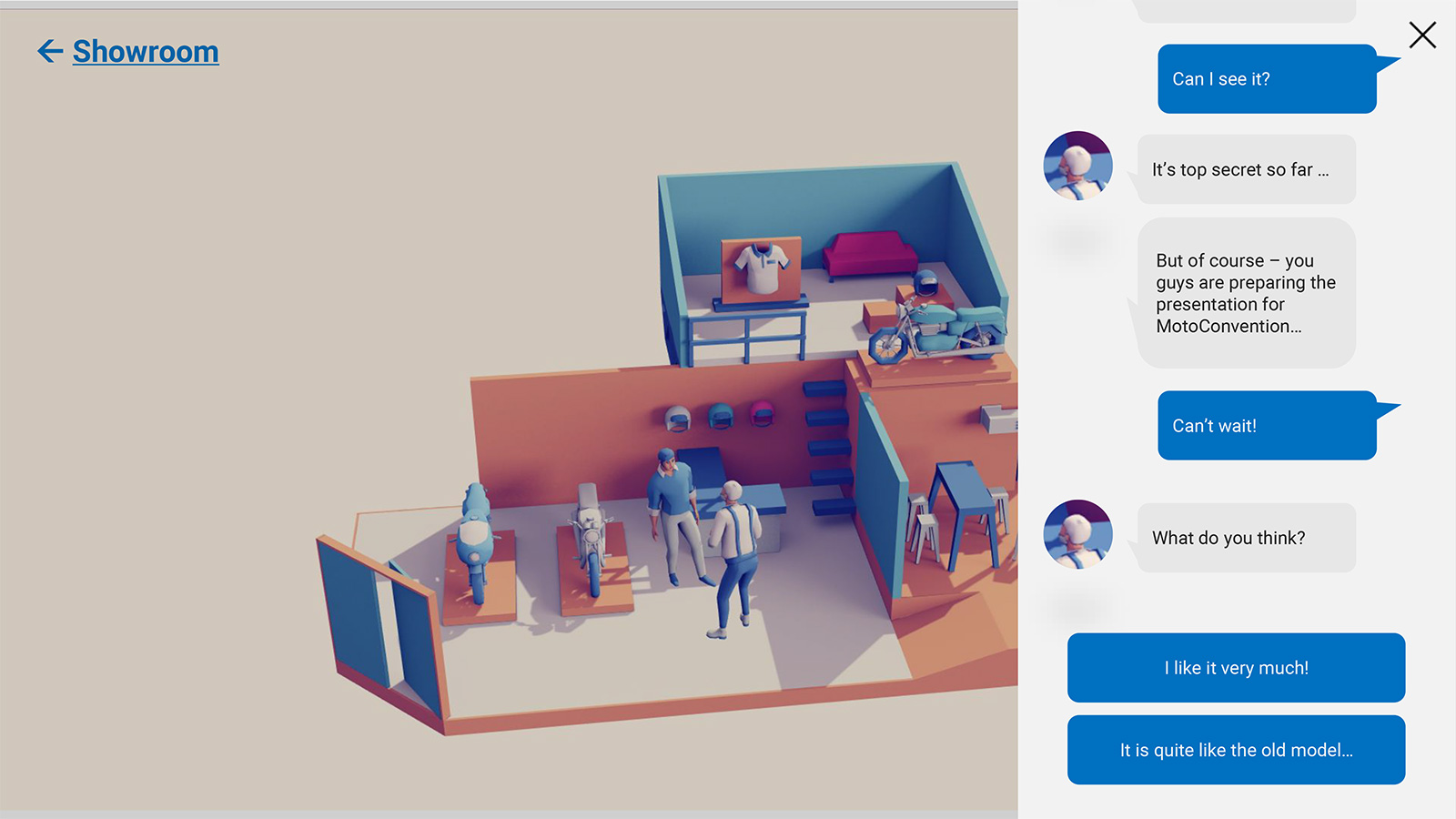
Another concrete example for the use of the imc 3D Map is a virtual world called "Moto City".

Another concrete example for the use of the imc 3D Map is a virtual world called "Moto City".
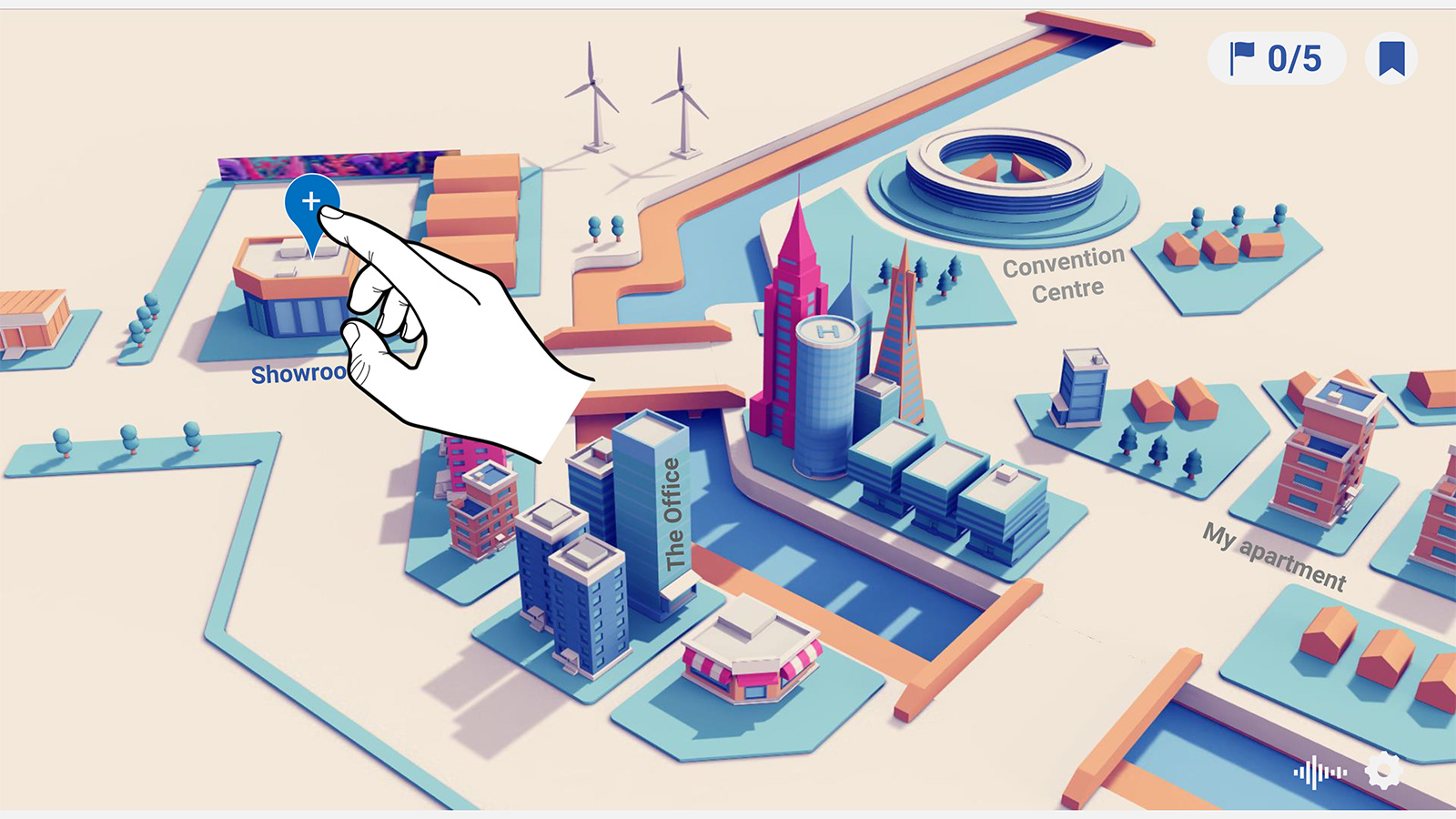
Another concrete example for the use of the imc 3D Map is a virtual world called "Moto City".

Another concrete example for the use of the imc 3D Map is a virtual world called "Moto City".
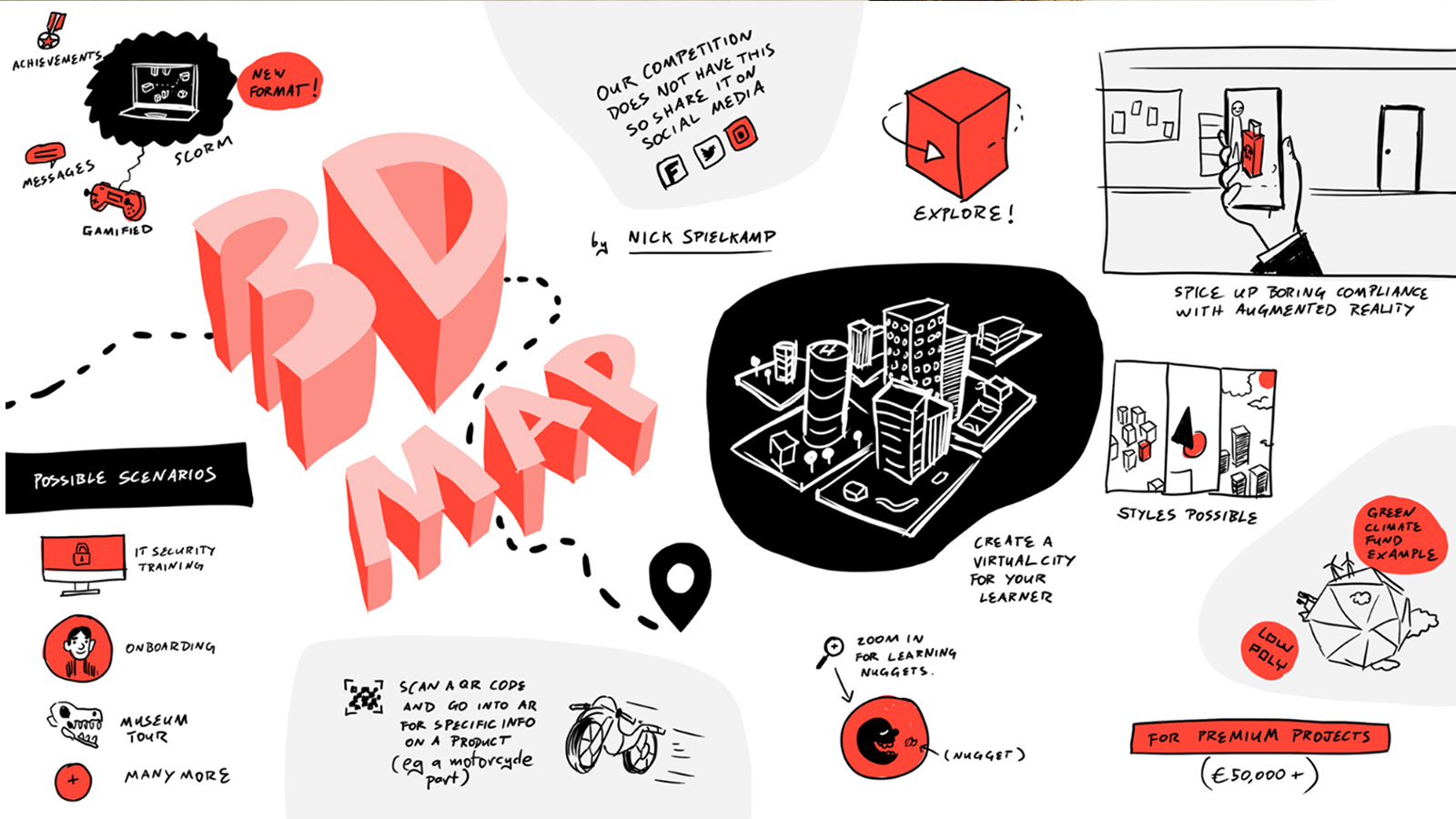

Contact person

Growing your business through partner training
It’s no secret that your internal team is your organisation’s greatest asset. However, you should bear in mind that it isn’t your only asset.
An organisation doesn’t operate in isolation. Its growth and success are also dependant on its network of partner relationships.
Your partners’ success is your success and in order for your partners to be successful, it’s your job to support them in every way you can. Training plays a pivotal role in this. If your organisation trains its network of partners, you empower the people outside of your organisation to contribute to your business goals.
It results in:
- more trained resources
- more efficient collaborative processes
- more revenue
Plus, it turns your partners into advocates and your advocates into your most ardent sales representatives.
In short, it will grow your business.

A massive opportunity, especially now
In these unprecedented times, many organisations are cautious when it comes to future plans. However, many others use this moment to accelerate their organisation’s digital transition and see new business opportunities.
“With massive disruption comes massive opportunity. I've seen many organisations rethinking their business model, with digital learning becoming an enabler to help them extend reach, drive new channels or implement new business approaches”, says Russell Donders, imc’s Director of International Markets. “(Digital) partner training is definitely one of these opportunities to grow businesses in challenging times.”
Partner training in an extended enterprise
The approach of empowering partners through training, is often referred to as Partner Training or Extended Enterprise Training.
But what is an extended enterprise?
An extended enterprise acknowledges that its growth and success is (partly) dependant on its network of partners. Therefore, it invests in its partner relationships and strives for optimal communication and collaboration with these partners, ultimately, to achieve shared business goals.
Aligning and training are essential in leveraging the collaborative relationship of all the partners involved in this extended enterprise.
And that is not just sales partners. Customers, members or even the general public can also be valuable partners who can contribute to your business goals. Keep that in mind when we are talking about partners; among all those external audiences connected to your organisation, there might be more potential partners than you think.
Competitive advantage
As most organisations fail to effectively empower external audiences, partner training (or extended enterprise training) will create a strong competitive advantage in your target market.
Ultimately, unlocking all that extra market potential will result in increased earning potential.
Or as our imc board member, Wolfram Jost, puts it: “a learning curve leads to an earning curve.”

Wolfram Jost, imc board member
What about not-for-profit organisations?
The concept of an extended enterprise sounds perfect for businesses, but what about not-for-profit organisations? Such entities often don’t see themselves as businesses or any form of commercial enterprise, for that matter.
Thankfully, the principles and ideas of extended enterprises for commercial entities also work well for non-profit organisations.
Remember that the word ‘partner’ can refer to all kinds of external audiences. If you run a not-for-profit organisation, the extended enterprise concept and the idea of training the partner network can also apply to e.g. your members or volunteers. Educating those external audiences will help your not-for-profit organisation achieve its goals, even if these goals are not primarily commercial.
How to get started with partner training
The concept of partner training sounds good in theory. But, how does it work in practice?
You may be worried about the logistics, the complexity or data security, data privacy, and compliance. All these thoughts conjure up many red flags in your mind and cause alarm bells to ring.
In other words, the mere thought of partner training is causing you to break out in a sweat.
But what if setting up a training environment that caters to all your needs isn’t as complicated or scary as it sounds?
The most important takeaway is: do not try to reinvent the wheel.
This is how you make partner training an integral part of your business strategy
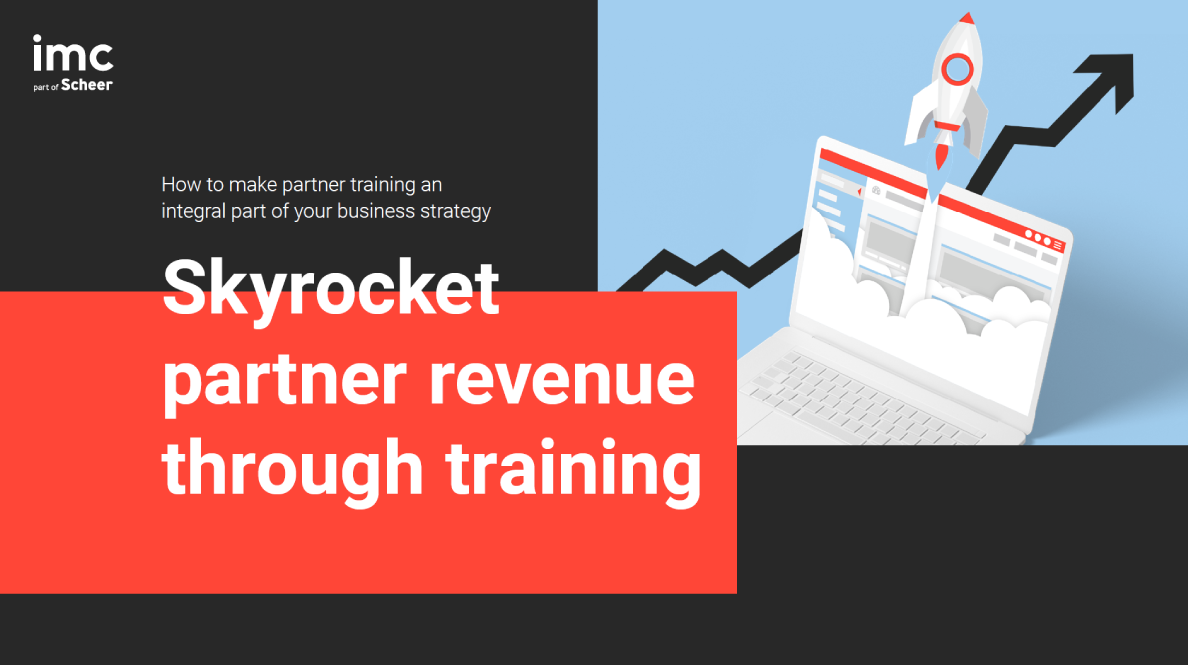
In our whitepaper Skyrocket partner revenue through training we discuss the topics you should consider when incorporating partner training in your business strategy and we share practical tips and insights about how to get started.
Contact
As imc has over 20 years of experience working with 1,200+ organisations globally, we can confidently say we have seen and solved many business challenges just like the ones you are facing today.
That’s why we would love to learn more about your situation and to give you some tailored, expert advice to solve the obstacles that you are facing.
Feel free to connect with Ailbhe for a free consultation call.

e-learning content
E-Learning Punk
You want to stand out from the grey mass of boring web-based trainings (WBTs) and inspire your learners with cool, creative and engaging content? Then you've come to the right place! E-Learning Punk is an article and talk series for all L&D Pros who want to dare something and believe that digital training has to be colourful and loud.
E-learning's not dead. It's time for
Every day new trends in digital training emerge - from game-based learning to mobile learning.
Every month we present a trend in an article, explain and give suggestions and tips on how to implement it in the company.
Every three months, we also discuss the latest and greatest of the last few months with experts in a talk session.

Articles

Cohort-based Learning: Learning Together Beats going it Alone
What does cohort-based learning mean? And why beats learning together going it alone? We have the answers! Learn more...

Leadership Training: When the Boss Takes the Learner’s Seat
Today’s managers are expected to have both subject expertise and good people skills. Subject expertise can be learned, obviously, but what about the people stuff – the soft skills?

Engaged Learning Through Learning Campaigns
In the same way, a good learning campaign should bring about a mind shift – ideally one that leads to concrete action. Sounds good, but how exactly? The answer is portals. They can provide a highly effective entry point to learning campaigns.
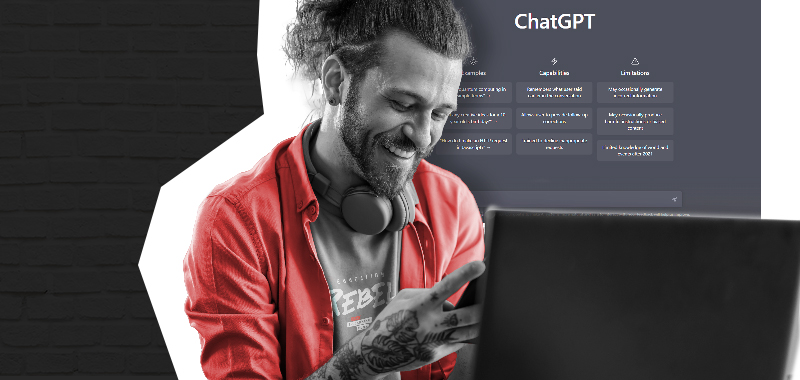
Hype or future: Will ChatGPT revolutionise corporate learning?
Hype or future: We have a look at what ChatGPT means for Corporate Learning

How Tinder and Netflix are shaping the future of learning
In a challenging environment, corporate learning will remain effective only if it is learner-centric and offers formats that are in keeping with learners’ other everyday digital experiences. This is important because learning providers are no longer competing just with other learning providers; they are also competing with dating apps, streaming services and social media.

Using Improvisational Theatre for Corporate Learning
Improv theater accomplishes what is expected of many teams on the job: they move safely through an uncertain situation by constantly adapting to new challenges, relying on each other, and acting spontaneously together. So it makes sense to use the method of improvisational theater in corporate learning as well.

Off-the-shelf content has come a long way from being an uncomfortable compromise
Individual or standard content - which should you choose? You should first ask yourself, "Is the training need or problem I have very specific? Or is it something that many different people in different industries need training on?"

The Power of Emotionally Intelligent Brand Training
Emotionality makes it easier for employees to identify with the brand. This identification has a positive effect on motivation and thus directly on daily work. Emotional brand training also generates brand ambassadors from within the company.

Diversity in e-learning content
Diversity in e-learning is clearly growing in importance. So, in this article, we have put together a summary of key recommendations for companies seeking to incorporate diversity into their learning experience.
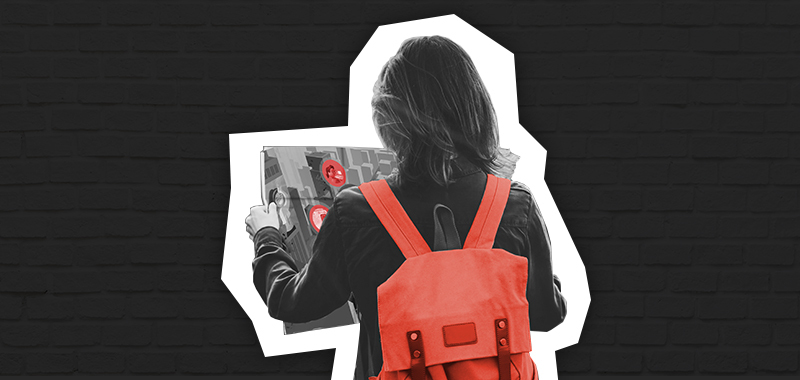
Tips and Tricks for Using 2D Maps in Learning Design
2D cards are old hat? No! We explain the difference between a 2D and a 3D map and show the structure of a 2D map training and its advantages.

E-Learning Content Trends 2022
Out with the old, in with the new. A new year brings new content trends that nobody involved in corporate learning can afford to ignore. Together with Falk Hegewald, Director E-Learning at imc, we are taking a look at the coming year’s crucial topics for companies.
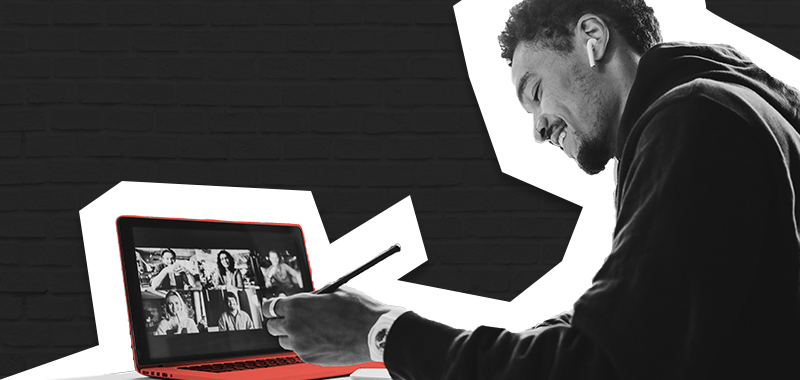
Six vital modules for every digital onboarding concept
This concept turns new content and existing e-learning content into an exciting and creative digital onboarding, even without a learning management system (LMS).

Rapid Content Development
Sometimes things have to happen quickly: This also applies to the creation of digital training. We check why fast creating digital trainings is possible but risky.

Gamification takes corporate learning to a new level
The fact that Game Based Learning works as a motivational booster for e-learning is already rooted in childhood. We have summarized the most common types of games and practical examples of possible applications for you.

Digital Learning Journey
Reaching the destination with the right blend of formats: Digital learning journeys capitalise on the strengths of each learning format to create a motivating and activating learning experience.
![[E-Learning Punk] Exploratory 3D Learning](https://images.im-c.com/wp-content/uploads/2021/02/imc_image_elearningpunk_3Dlearning_thumbnail.jpg)
Exploratory 3D Learning
Not only movies like “Avatar”, but also learning content can benefit from spatially compelling images. We explain the advantages of this professional development trend and present you application scenarios for 3D learning.

Learning with GIFs
Social media is not the only place for GIFs. They can also make learning more vivid and entertaining. We have compiled the most important arguments as well as some tips for the use of GIFs in e-learning for you.

A plea for diverse learning content
Diversity is increasingly becoming a hygiene factor in our working world. E-Learning Content Project Manager Kenny appeals: “The diversity you want must also be reflected in your learning content.”
![[E-Learning Punk] Digital Fastfood](https://images.im-c.com/wp-content/uploads/2020/07/imc_image_elearningpunk_DigitalFastfood_thumbnail_2020_07_07.jpg)
Digital rebellion or digital fastfood?
During the corona crisis companies are catapulted into the digital future. But how much of the current digitalisation efforts in professional development are really sustainable?
![[E-Learning Punk] Virtual Classroom Preview](https://images.im-c.com/wp-content/uploads/2020/06/imc_image_elearningpunk_virtualclassroom_thumbnail_2020_06_05.jpg)
Rock 'n' roll in the virtual classroom
Virtual lessons are on the rise. Find out how the virtual instructions work, what you should pay special attention to and which providers offer virtual classrooms software.

Social Learning While Social Distancing
Social learning is among the top e-learning trends in times of corona and social distancing. Discover three social learning scenarios in the business context and pick up specific tips for realising them.

Immersive Learning during the Crisis
Immersion is one of the most successful learning methods. Jennifer Fritz, VR expert, points out the potential benefits of using Virtual Reality especially during this unprecedented times.

AI Learning
"Artificial intelligence is already further than critics believe." imc board member Dr. Wolfram Jost explains in this interview how far AI actually is using illustrative examples.

The quiz show phenomenon in e-learning
Quiz apps for learning? For sure! We will talk about the success factors of quizzes, introduce areas of application for quiz apps in companies and give you 5 tips for their use in continuing education.

Watch out: Video-based Learning
You'll get to now the benefits of video learning and five major training video formats. Finally, you woll get tips on how to create training videos.

Go for Game-based Learning
We talk about what lies beneath the trend of this playful knowledge transfer method. We explain why it works so well and present 3 application scenarios for learning games in the company.

Mobile Learning Life-Hacks
Smartphones, Twitter & Co. are already part of our everyday lives. With our life-hacks you will create inspriring and engaging content that your team can consume from anywhere.

Blended Learning Recipe
Blended learning is like a balanced meal. In our interview instructional designer Malte Arends reveals his recipe for perfect blended learning, every time.
Talk sessions

Punky Talk #5: Sven R. Becker
Instead of focusing on trends, our E-Learning Punk 2020 Festive Season Special takes a closer look at the e-learning basics: What are the fundamentals companies need to have in place before they can focus their efforts on the latest digital professional development trends? Sven R. Becker, Member of the Board of imc, reveals how to build a solid foundation.

Punky Talk #4: Dr. Fabian Kempf
Dr. Fabian Kempf is Managing Directors of Vitero, a virtual classroom tool provider. The highlight of the Vitero software is its user interface which depicts a virtual room based on the real world. Yet, Dr. Kempf is not a fan of poorly modelled 3D avatars. Find out why.

Punky Talk #3: Katharina Kunz
Katharina, an expert for learning strategies, helps companies link learning content, systems and people to create a working learning ecosystem. She is appealing to those in charge of professional development to provide their learning offer in buffet form.

Punky Talk #2: Roman Rackwitz
Roman Rackwitz has been involved in gamification since 2007 and has already been named one of the top 10 gamification experts in the world. In the E-Learning Punky Talk, he discusses game-based learning, quiz-based learning and AI.

Punky Talk #1: Karlheinz Pape
In this E-Learning Punk Talk, Karlheinz Pape, founder of the German Corporate Learning Community, talks about his favourite topic, self-directed learning, as well as the current digital training trends video-based learning, blended learning and mobile learning.
Like. Follow. Share.
Discuss e-learning trends with us and become part of our lively and interactive social media world. Choose your channel and off you go: tweet, like, post, discuss, share and recommend.
Under the hashtag #eLearningPunk you can find all articles and videos of the series. You can also use the hashtag to post and discuss questions to our talk guests.
Contact person
I joined the imc newsroom team in 2021. As a journalist my heart beats for content and storytelling.
I’m excited to figure out how e-learing and digitization affect the future of work. My task is to create content to talk about and I’m always looking for trends.
Privately I love to travel and eat Tapas.
Topics: E-Learning Trends, Corporate Social Responsibility, Press and Influencer Relations, New Work
I am always happy to receive feedback on the series at [email protected]


Five tips for more fun with e-learning
The company is offering a new e-learning course – does this still have the unfortunate effect of triggering the same feelings in your learners as their annual reminder to have the plaque removed from their teeth? It doesn't have to! We'll give you tips and tricks on how to make learning more fun by using GIFs.
Basics on the topic of GIFs
The first GIF had already been developed as early as 1987, but the idea of GIFs goes back even further. GIFs are, in fact, comparable to the good old flip book. The rapid flow of several individually drawn graphics creates a moving image for the human eye, basically an extremely short video without sound.

Not quite picture, not quite video: GIF stands for Graphic Interchange Format. GIFs are usually animated short clips without sound.
Even after more than 30 years, GIFs still enjoy great popularity, despite their somewhat dated appearance. The popular moving images are widely used, pixelated and limited colour spectrum notwithstanding, because they can be integrated almost anywhere and are easy to create and share. What’s more: Our digital communications, whether on Twitter, WhatsApp or Teams, would certainly be a lot less entertaining and descriptive without GIFs. Speechless? No problem! Joy, sadness, compassion, shame – no matter what feeling you want to convey, you can always find a GIF for it.
Good reasons for using GIFs in learning
Social media is not the only place for GIFs. They can also make learning more vivid and entertaining. We have compiled the most important arguments for the use of GIFs in e-learning for you:
- GIFs visually represent ideas and information in a few seconds
- A GIF is easier to follow than a series of still images
- GIFs usually run in a loop and are also perceived out of the corner of the eye
- GIFs therefore do justice to the attention span of Generation Goldfish (<8 seconds)
- Creating GIFs is much easier than creating high-end video content
- GIFs play automatically on almost any system
- GIFs trigger emotions. The stronger the emotion, the better the memory
- GIFs are mobile-friendly and ideal for micro-learning
tips for more GIF Ingenuity
The use of GIFs in e-learning offers several advantages. Use these short, vivid clips, for example, to make a step-by-step tutorial more entertaining, reinforce a key message, provide feedback, or make comparisons. We have summarised the most important tips for using GIFs in digital training courses for you below:
Tip 1: Offer your goldfish entertainment
Technological progress brings many opportunities and possibilities along with it, but at the same time, it is blamed for decreasing attention spans. You can counter that with GIFs. A good GIF attracts attention and triggers emotions, thus ensuring long-term retention. Boring, colourless GIFs reduce these effects.

Tip 2: No information overload
A rule of thumb should be: Only one theme per GIF. The individual short clips should not be longer than ten seconds and should be intuitively comprehensible. After all, true GIF genius is about explaining even complex facts in a simple and entertaining way (see point 1!).

Tip 3: Don't become Robin Hood. Or: No stealing for a good cause
Besides the popular genre of animal GIFs (keyword cat content), ultra short film scenes make particularly popular GIFs. Before you use a GIF like this from the Internet for your online training courses, however, make sure that you are not violating any copyrights.

Tip 4: Not everyone is familiar with Harry Potter
Consider the cultural background and age of your target audience. For example, if you use a meme from a film, ask yourself: Is my target audience likely to know the film? If a GIF is not clear and understandable, its positive learning effect is significantly reduced.

Tip 5: And the Oscar goes to... Hire a good protagonist
Do you have a recurring character in your other online training courses? Then provide your learners with a common thread and create GIFs with that character as well, for example, to provide feedback on a digital query. Passed the test? -> Rejoicing & Applause. Didn't pass the test? -> Sad face.

During an in-house imc BarCamp, Instructional Designer Stephan Urbanski and Senior Developer Frédéric Macchi presented a more detailed look at the potential of GIFs in the context of learning. The following sketchnote summarises the results of the session and all the important facts about learning with GIFs:
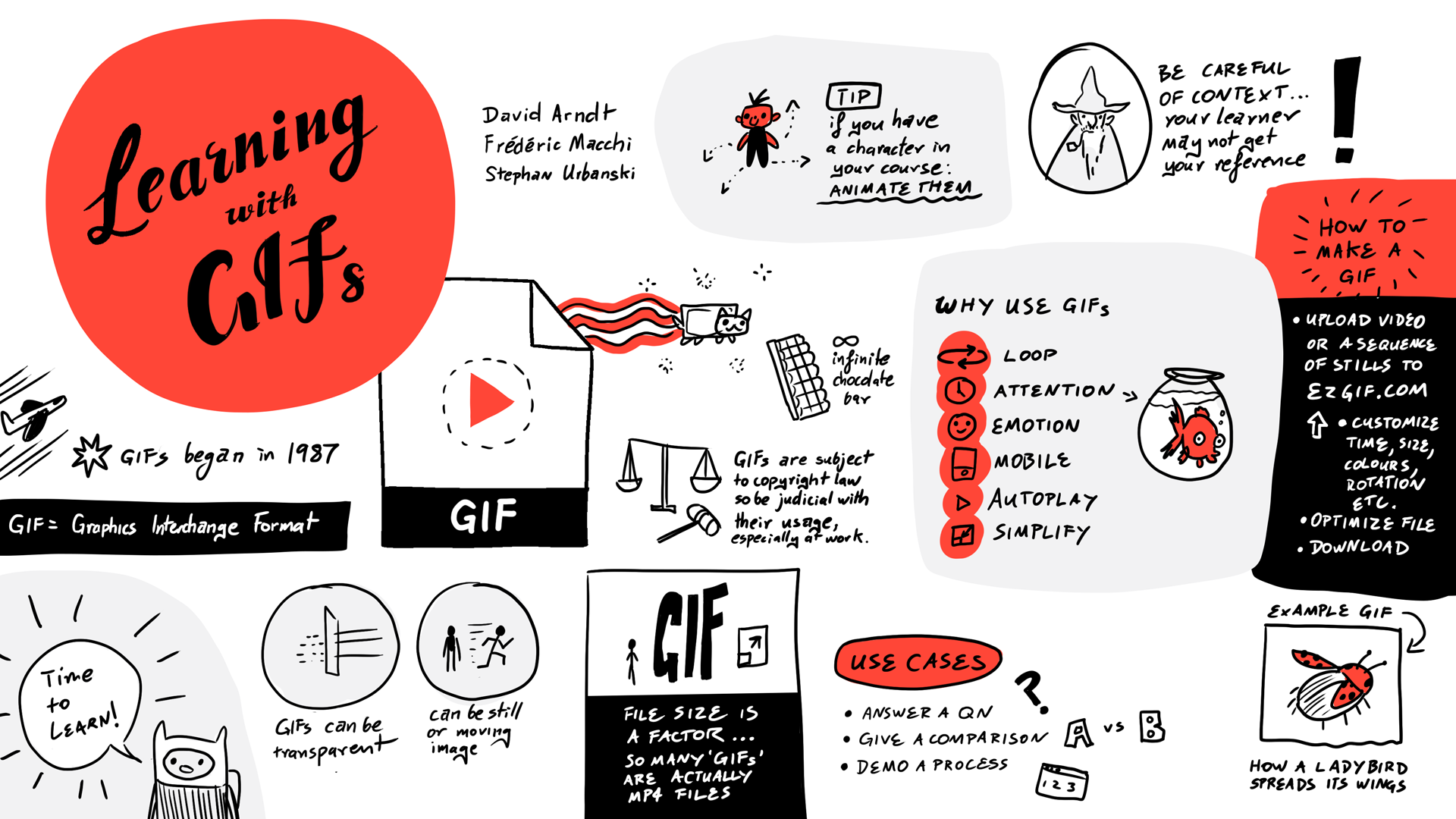
Contact person

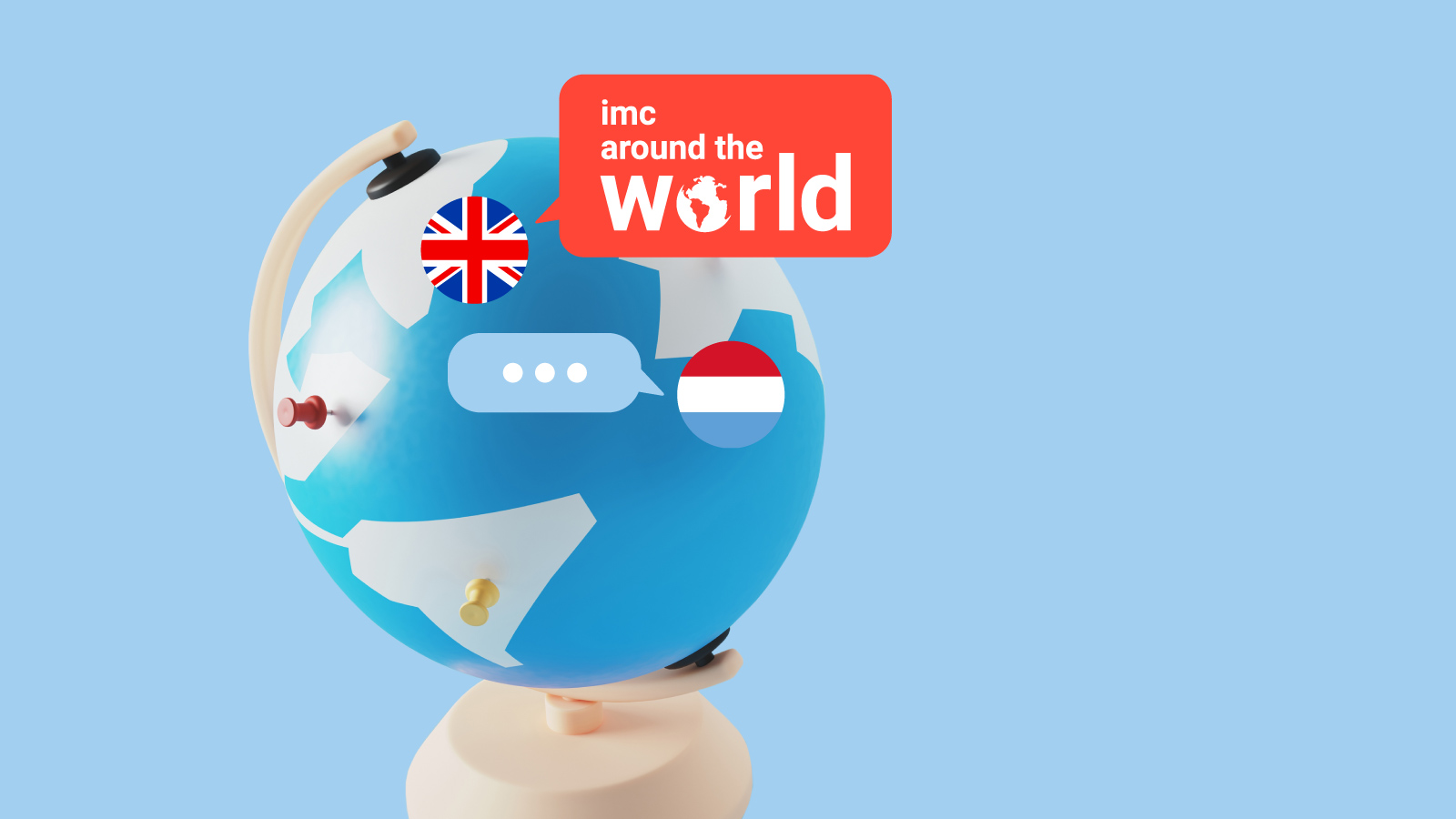
The future of Corporate Learning 2021
L&D was heavily impacted by COVID-19 last year. But there is always a light at the end of every tunnel. “With massive disruption comes massive opportunity. I've seen many organisations rethinking their business model with digital learning becoming an enabler to help them extend reach, drive new channels or implement new business approaches”, says Russell Donders, Director International Markets.
Nick Spielkamp, Senior Sales Manager at imc Switzerland and Daniel Antman, Managing Director imc Australia have already talked about incredible opportunities such as "Learning Analytics" or "Aligning Learning Strategies to The Digital Generation" in our last two episodes of this article series. But what is the situation like in other countries? For example in the United Kingdom, the Netherlands and Belgium? Tracey Blamire (Business Development Manager UK) and Tanja Baars (Business Development Manager Netherlands & Belgium) share their experiences and what to expect for the future of corporate learning in 2021.

Tracey Blamire, imc
Last year, almost all classroom trainings were forced to switch to virtual classrooms, practically overnight. Some organisations dealt (surprisingly) well with the sudden change. Others, not so much.
Aside from the technical challenges and people’s ability to find the (un)mute button, it also led to (social) interaction and attention challenges. Many teachers have struggled with getting and holding the same level of attention as they were used to in a physical classroom.
Interacting with learners became (even) harder and many teachers found themselves desperately checking their sound settings during the umpteenth awkward silence after asking a question. Are learners holding back in a virtual environment? Are they more easily distracted? Or are they just paying less attention when they’re not physically in the same room as their teacher and fellow learners?
As the virtual classrooms are here to stay (even when the physical classrooms will have returned), these interaction and attention challenges will be the 2021 nuts to crack. I think many players in the elearning industry will throw themselves on this issue. Tech companies will come up with dazzling new features, learning content providers will develop even more engaging and interactive content and teachers will invent creative new ways of motivating and encouraging their learners. I’m convinced that all their efforts in combination with a naturally growing adaptation of virtual environments in general, will – in the end – put an end to the awkward silences.
Happy new year!

Tanja Baars, imc
It’s safe to say that no organisation had planned the fast-forward digital transition that they went through in 2020. Some organisations had to speed up the process that they were already in, others suddenly had to start from scratch.
The speed of the 2020 digital transition was pretty impressive, sometimes surprising, but in some cases quite tricky, too. Organisations were forced to take decisions overnight, often without thoroughly researching their actual (long-term) needs.
Blinded by short term necessities and the need for speed, time became a disproportionately big factor in the decision and implementation process.
Obviously, in such unprecedented circumstances, there is no one to blame for that (although, if you hadn’t even started your organisation’s digital transition before Covid, there actually might be people to blame, but that’s another discussion), but many organisations will probably have to deal with the consequences after the pandemic.
I think many organisations will only realise in 2021 that some long-term needs were overlooked during the speedy transition process in 2020. Especially factors that make digital (learning) platforms not only pandemic-proof but also future-proof – like the platform’s ability to scale and adapt to future changes and growth of the organisation – might have been forgotten in hasty times in which everything was Covid.
I genuinely hope that I’m wrong, and that, in a few years’ time, we can conclude that the accelerated processes during the pandemic actually had a positive and durable outcome for organisations in the long run. Let’s stay positive. And Covid-negative.
Happy 2021!
Contact
I’ve been a member of the imc crew since February 2019. My multi-faceted tasks always keep me on the go. In addition to my work on corporate brand, marketing and communication strategies and employer branding, I also delve into the operational side.
I have a passion for networks and communities. That is why I represent the brand ambassador programme in the editorial team. I am also actively involved in the SCHULEWIRTSCHAFT (School-Business) network.
Privately, my big passions are travelling, Disney and interior design.

![[E-Learning Punk] Christmas Special](https://images.im-c.com/wp-content/uploads/2020/12/imc_image_elearningpunk_Christmas_hero_2020_12_17.jpg)
Punky Talk #5: Sven R. Becker
The imc Board Member talks about basics like learning culture and target group orientation
Our fifth Punky Talk is our 2020 Festive Season Special. As a one-off, it is dedicated to the e-learning basics rather than to trends. After all, countless lists of top trends for the coming year are popping up wherever you look. We would rather use the year-end to ask: What are the fundamentals companies need to have in place before they can focus their efforts on the latest digital professional development trends in 2021?
And who is better placed to answer this question than Sven R. Becker? Sven was appointed to the Management Board of imc in January 2019 after many years of service for the company. During his studies, Sven already worked intensively on e-learning and UX design. Having paid close attention to the developments in the industry for years, he noted: 2020 was not just the year of corona, but also the big moment for “digital literacy”. A digital mindset now exists pretty much everywhere. Consequently, the relevance of e-learning is no longer limited to large corporations and companies in heavily regulated industries.
Sven recommends that anyone seeking to venture into the digital professional development world in the new year take an iterative approach. The important thing now is to get started! When trying to decide whether or not a trend is useful for your company, Sven suggests taking a closer look at the target group.
Sven also talks about costs, grassroots movements and the impact e learning has on corporate success.
Enjoy watching!

To watch this video, marketing cookies must be accepted. Click on the play button to accept. You can find more information in our cookie banner and in the privacy policy.
(Note: under "settings", you can turn on the English subtitles for this interview)
Contact person


Corporate Learning 2021:
Looking to the future – right now
2020 was an exceptional year – shaped by a global pandemic, it will undoubtedly remain in our collective memory for a very long time to come.
We have talked a great deal about what this crisis means for digitalisation. Is it a driver or an inhibitor? Where are the hidden champions? Do we have an appetite for digital fast food, or do we hunger for slow food?
Of course, not every company was prepared to grab the bull by the horns, but digitalisation has been shown to ensure a company's survival while opening up new possibilities as well. In addition to new markets, business models and target groups, professional development has certainly taken on a key role this year.
These are exciting times for Learning and Development Professionals, as in-person training sessions, which had generally been the norm up until the crisis, now present new challenges for organisations. It's time to rethink professional development! We are experiencing an unforeseen demand for online formats and learning platforms, as well as a need to create hybrid formats; for example, social learning has suddenly transcended the limits of likes and comments.
In this series of articles, however, we will not be looking back but rather setting our sights on the future. While imc experts from around the world share their experiences from last year in a four-part special feature, they are primarily looking forward to new topics, trends and opportunities.
This special feature is meant to provide encouragement as well as ideas and impulses for the coming year. Nick Spielkamp, Head of Marketing and Sales at imc Switzerland will kick the series off with Part 1.

Nick Spielkamp, imc
In the upcoming year, digital training initiatives in Switzerland will focus strongly on actual business output. The current crisis will continue to be a driver for digital learning in 2021, but the effect of all training measures on the enabling of employees will be monitored even more closely, so that training budgets can be used accordingly.
So I see a strong shift from a pure training focus to a strong performance focus. In order to be able to substantiate the effects on the optimization of work results, the consolidation of training and business data in the form of Learning Analytics analyses will play a central role in the coming year.
Learning Analytics data not only provides evidence of the effectiveness of training measures, but also allows for targeted intervention in training to further optimize it and ultimately make employees better at what they do.
In addition to the continuous sharpening of digital training measures in terms of business output, I see a strong decentralization of the design and production of digital training content in the coming year. The Corona crisis has further reinforced the trend that more and more learning content must be digitized in the shortest possible time.
This cannot be achieved by the professional learning and development departments in the companies alone, which is why the technical experts themselves are increasingly assuming responsibility at this point.
However, these know-how carriers must be enabled accordingly in order to create didactically and visually high-quality training courses for various output formats at a reasonable cost. This is exactly where new types of rapid authoring solutions will play an important role, supporting the subject matter experts with artificial intelligence in the efficient production of digital learning content.
Contact
I’ve been a member of the imc crew since February 2019. My multi-faceted tasks always keep me on the go. In addition to my work on corporate brand, marketing and communication strategies and employer branding, I also delve into the operational side.
I have a passion for networks and communities. That is why I represent the brand ambassador programme in the editorial team. I am also actively involved in the SCHULEWIRTSCHAFT (School-Business) network.
Privately, my big passions are travelling, Disney and interior design.


Shaping the new world of Corporate Learning in 2021
Our series of articles from imc employees all over the world started in Switzerland. In this episode we take you to the other side of the world. Daniel Antman, Director imc Australia, has joined imc in February 2020 and had to face special challenges right from the start. In this guest article he talks about his experiences, lessons learned but also chances and possibilities for the Australian e-learning marketing in 2021.

Daniel Antman, imc
The digital transformation of learning is having an immediate and notable impact on business performance. Companies will need to redefine their organisation’s learning and development strategy in 2021 to ensure alignment with their revenue and growth objectives.
As we approach the end of what can only be described as a tumultuous 2020 and look forward to 2021, the dominant behaviours that will define success are adaptability, nimbleness and alignment.
Many businesses are going through their 2021 strategic planning right now and some who may have already completed their plans, are going back to revisit them to ensure they are relevant to the probable long-term structural changes we have seen.
From a macro perspective we see a relatively stable outlook for both Australia and New Zealand. We have a well-capitalised banking sector that has proven its resilience in throughout both the global financial crisis and more recently through the pandemic.
At the national levels both economies have relatively low debt levels to GDP (compared to other western economies) ensuring there are tools in the fiscal cabinet for government (Federal and State) to implement stimulus programs to keep the economy moving. We have unprecedented low interest rates that have kept both consumer spending and the housing market at acceptable levels throughout this 2020 Covid impacted year.
We have also not yet seen the expected spike in unemployment. While the expectation is that the peak in unemployment won’t be seen until Q1 2021, there is a quite confidence it may not be as bad as originally predicted. The jobkeeper program (a federal government initiative that has ensured workers impacted by a shut-down in their sectors retain an income) has steadied the economic ship and minimised the impacts of the covid shut-downs.
Perversely we think there may be upside in the dislocation of people from their traditional jobs and professions as they potentially return to the workforce in different industries. The movement of people into new roles and businesses should in theory bring into focus the need for more and effective training.
We have seen a significant uptick in employment with some of our clients in the public sector who have absorbed a number of displaced workers. For example, we have seen a consistent increase in demand for our content services from DHHS (Department of Health & Human Services) who have been actively expanding throughout the covid crisis.
There is also a sense the language of business is changing. A few months ago people in business were still saying “when things go back to normal we’ll do this and that”. Now the rhetoric is changing.
There is greater recognition, at least empirical recognition, that we are probably going to be forever spinning on a new axis. Think back to the 2011 powerful earthquake that moved the main island of Japan by 8 feet and shifted the Earth on its axis. It’s where we are at in terms of the business landscape too – spinning in a different place and probably never going back.
We also rethinking the way businesses are segmented in Australia/New Zealand corporate market. While businesses can be easily bucketed into defined categories, for example financial services or utilities, from a learning perspective we see them grouped differently. Specifically, we see the local corporate landscape being defined as entities that are:
- Membership orientated (e.g professional associations like ACCA and AusIMM)
- Exposed (e.g those heavily impacted by regulation/compliance like financial institutions)
- Complex (e.g dynamic entities who requires a deep and complex solutions that brings their organisation together like a pharma business)
- Challenged (e.g Organisations who have experienced significant and complex growth pains and have been forced to evolve due to late adoption)
- Branded (e.g Organisations who have a brand promise to uphold and deliver like Blackmores)
It is true that an entity may take on more than one of the above characteristics yet they typically have a bias to one. The importance of understanding this in the Australian context is that learning and development will mean different things to entities where there are different bias’s. That requires our communication, business development and marketing to be bespoke and identifiable to them.
Within each of these business personas are the decision makers and, when it comes to aligning the concept of learning with business objectives, they will be motivated by different things. While these are not new concepts (in terms of how decision makers can be categorised), we are seeing the emergence of clearer definitions of who the decision makers are in the types of organisations noted above.
In other words, it’s a bit of a match-and-mix matrix between the type of organisation and the decision makers. As the concept of employee development, training and motivation in a remote working environment continues to unfold, decision makers will need to be swayed by targeted and relevant messaging about the role of learning and how the empowerment of their people is directly connected to business performance.
These decision makers can be broadly classified as one of:
The Charismatic - decision makers with big ideas and proven results that speak to the bottom line and keep my company competitive.
The Thinker - Intelligent, low-risk solutions that save time and money.
The Sceptical - Ground-breaking ideas with people I can trust.
The Follower - The best ideas have been tried and tested by big brands.
The Controlling - Highly structured arguments that fit like a glove.
Adaptability and Speed Are Key

We’ve seen many examples of businesses having to adapt to this new business as ‘unusual’ environment. In a learning context, we’ve seen companies pivoting from delivering in-house training sessions, offsite sales conventions and other forms of in-person professional development to a full digital delivery format.
Those who have adapted quickly may well be best positioned to capitalise on the ongoing benefits of digital learning. It’s one thing to adapt, it’s another thing to do it efficiently and effectively. Again, in a learning context, those businesses who have been fast and adept at embracing new delivery mediums are having more success in maintaining effective connections with staff and key stakeholders.
Aligning Learning Strategy to The Digital Generation
Aligning the delivery of quick, effective and meaningful knowledge-transfer with the commercial/performance imperatives of the business has never been more critical. For many astute business people, the current climate has highlighted the critical importance of knowledge transfer and learning to drive increased engagement with staff and other stakeholders including customers.
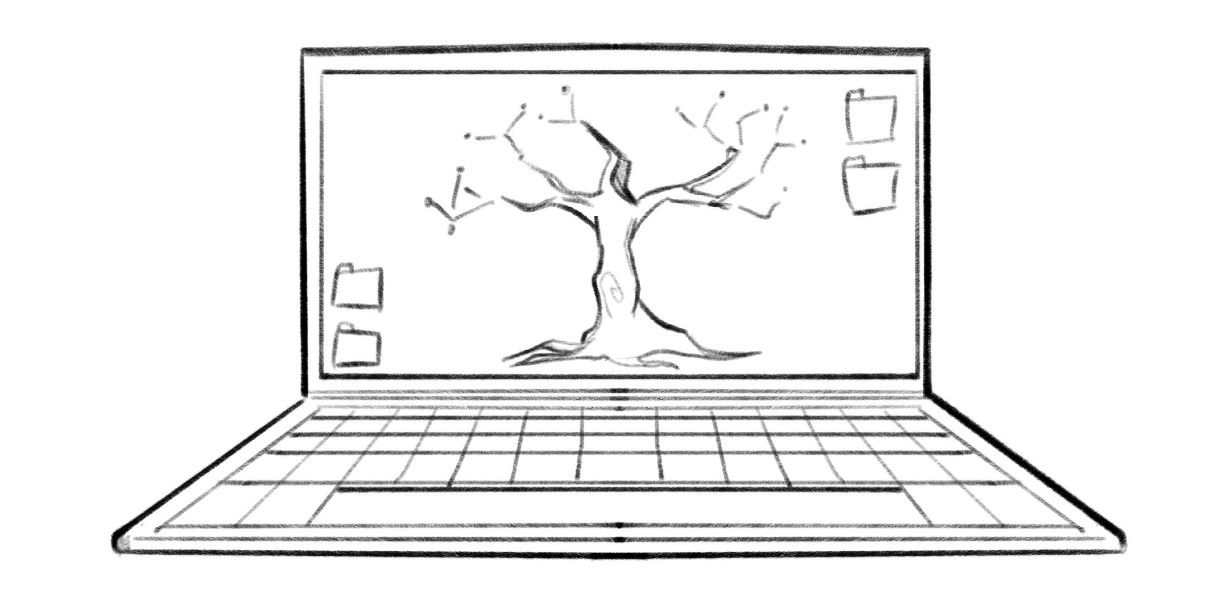
Stable, well trained and stimulated employees translate directly to the bottom line. Well-developed and informed customers/stakeholders become advocates for businesses.
A recent LinkedIn research study identified the primary driver that connected Millennials and Gen Zs to the organisations they worked for was development. Not pay or work conditions, but development.
For organisations who see themselves as genuine learning businesses, and who are committed to developing and growing their teams, their time has come. They are embracing the technologies that will enable them to deliver the learning that is valued by those seeking the development, support and care.
Happy, stimulated, developing and supported employees are those more likely to stay and contribute to ongoing success - something every C-Suite and/or senior manager needs to keep in mind.
Virtual Conferencing Tools and Learning

Throughout the crisis of 2020 businesses have turned to and utilised connectivity tools including Zoom, GoToMeeting and Teams to mention a few. In many respects these tools have been a communication lifeline for business. Yet on their own they are not learning, training or development tools.
Genuine learning that is impactful, sustainable and measurable needs to be expertly designed to ensure it delivers the desired outcomes through the chosen delivery platform. Virtual conferencing tools can and often do play an important part in a blended learning environment. However, they are not designed to be alternatives to expertly designed and delivered learning platforms.
Would You Like Cake & Coffee with Your Training?
Are those days gone? No longer can businesses rely on the attraction of food and drink to encourage staff to join the in-house training sessions in the communal meeting rooms. Nor can they rely on trips to the local café which doubled up as the overflow meeting room when the office facilities were booked.

Yet the challenges that 2020 have thrown out open the opportunity for innovation and out-of-the-box thinking when it comes to learning. The sophistication and power of technology driven learning platforms offer businesses with exciting possibilities to deliver knowledge in a way that can be a genuine game-changer.
Learning, training and knowledge-transfer are no longer the sole domain of the HR or Learning Development teams. They should be a focal point for the C-suite and boards when considering how to leverage digital learning platforms to develop, stimulate and ultimately retain the people they rely on to meet their business objectives.
Contact
I’ve been a member of the imc crew since February 2019. My multi-faceted tasks always keep me on the go. In addition to my work on corporate brand, marketing and communication strategies and employer branding, I also delve into the operational side.
I have a passion for networks and communities. That is why I represent the brand ambassador programme in the editorial team. I am also actively involved in the SCHULEWIRTSCHAFT (School-Business) network.
Privately, my big passions are travelling, Disney and interior design.

Impactful Learning: The Driving Force Behind Business Performance
The digital transformation of learning is having an immediate and notable impact on business performance. Those who have adapted are reaping the rewards, says Daniel Antman, Managing Director of imc Australia. In his opinion, companies will need to redefine their organisation’s learning and development strategy in 2021. A personal statement.

Daniel Antman, imc
As we approach the end of what can only be described as a tumultuous 2020 and look forward to 2021, the dominant behaviours that will define success are adaptability, nimbleness and alignment.
Many businesses are going through their 2021 strategic planning right now. And, some who may have already completed their plans are going back to revisit them, to ensure they are relevant to the changed and the probable long-term structural changes we have seen.
There is also a sense the language of business is changing. A few months ago people in business were still saying “when things go back to normal we’ll do this and that”. Now the rhetoric is changing.
There is greater recognition - at least, empirical recognition - that we are probably going to be forever spinning on a new axis. Think back to the 2011 powerful earthquake that moved the main island of Japan by 8 feet and shifted the Earth on its axis. It’s where we are at in terms of the business landscape too – spinning in a different place and probably never going back.
Adaptability and Speed Are Key
We’ve seen many examples of businesses having to adapt to this new business as ‘unusual’ environment. In a learning context, we’ve seen companies pivoting from delivering in-house training sessions, offsite sales conventions and other forms of in-person professional development to a full digital delivery format. Those who have adapted quickly may well be best positioned to capitalise on the ongoing benefits of digital learning.
It’s one thing to adapt, it’s another thing to do it efficiently and effectively. Again, in a learning context, those businesses who have been fast and adept at embracing new delivery mediums are having more success in maintaining effective connections with staff and key stakeholders.
Aligning Learning Strategy to The Digital Generation
Aligning the delivery of quick, effective and meaningful knowledge-transfer with the commercial/performance imperatives of the business has never been more critical. For many astute business people, the current climate has highlighted the critical importance of knowledge transfer and learning to drive increased engagement with staff and other stakeholders including customers. Stable, well trained and stimulated employees translate directly to the bottom line. Well-developed and informed customers/stakeholders become advocates for businesses.
A recent LinkedIn research study identified the primary driver that connected Millennials and Gen Zs to the organisations they worked for was… development. Not pay or work conditions, but development.
For organisations who see themselves as genuine learning businesses, and who are committed to developing and growing their teams, their time has come. They are embracing the technologies that will enable them to deliver the learning that is valued by those seeking the development, support and care.
Happy, stimulated, developing and supported employees are those more likely to stay and contribute to the ongoing success - something every C-Suite and/or senior manager needs to keep in mind.
Virtual Conferencing Tools and Learning
Throughout the crisis of 2020 businesses have turned to and utilised connectivity tools including Zoom, GoToMeeting and Teams to mention a few. In many respects, these tools have been a communication lifeline for business.
Yet, on their own, they are not learning, training or development tools. Genuine learning that is impactful, sustainable and measurable needs to be expertly designed to ensure it delivers the desired outcomes through the chosen delivery platform.
Virtual conferencing tools can and often do play an important part in a blended learning environment. However, they are not designed to be alternatives to expertly designed and delivered learning platforms.
Would You Like Cake & Coffee With Your Training?
Are those days gone? No longer can businesses rely on the attraction of food and drink to encourage staff to join the in-house training sessions in the communal meeting rooms. Nor can they rely on trips to the local café which doubled up as the overflow meeting room when the office facilities were booked.
Yet the challenges that 2020 have thrown out open the opportunity for innovation and out-of-the-box thinking when it comes to learning. The sophistication and power of technology-driven learning platforms offer businesses with exciting possibilities to deliver knowledge in a way that can be a genuine game-changer.
Learning, training and knowledge-transfer are no longer the sole domain of the HR or Learning development teams. They should be a focal point for the C-Suite and boards when considering how to leverage digital learning platforms to develop, stimulate and ultimately retain the people they rely on to meet their business objectives.
Daniel Antman is the Managing Director of imc Australia, part of the global imc group and one of the world’s leading digital learning businesses.

Further information
If you would like to learn more about how to implement digital learning effectively, feel free to contact us.
Contact
